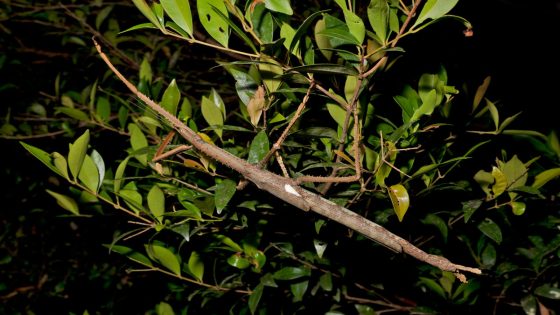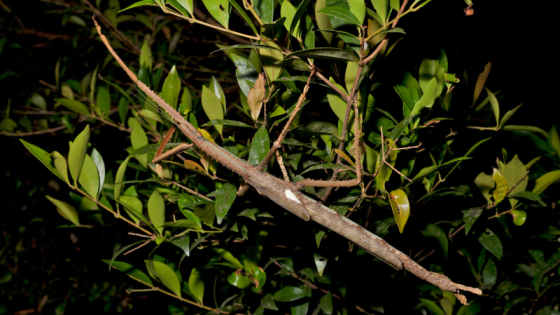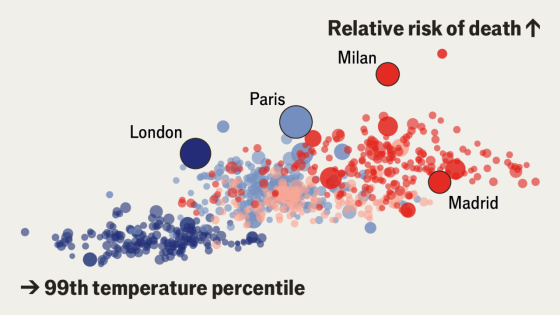A remarkable discovery has been made in the Atherton Tablelands, where a new species of stick insect has been identified. This giant insect, known as Acrophylla alta, weighs about 44 grams, making it potentially the heaviest insect in Australia. The findings were published on August 1, 2025, in the journal Zootaxa.
- New stick insect species identified in Queensland
- Acrophylla alta weighs around 44 grams
- Habitat is high-altitude rainforest canopy
- Unique egg characteristics aid species identification
- Large size may help survive cooler conditions
- Specimens included in Queensland Museum for research
Professor Angus Emmott from James Cook University played a crucial role in this discovery. He noted that while there are longer stick insects in the region, none match the weight of Acrophylla alta. The unique eggs of this species, which differ in texture and shape from other stick insect eggs, were essential for its identification.
Why has this species remained undiscovered until now? Its high-altitude rainforest habitat is difficult to access, limiting human encounters. This raises questions about how many more species might be hidden in hard-to-reach environments.
This discovery emphasizes the need for ongoing research in biodiversity. Understanding unique species like Acrophylla alta can help US better conserve ecosystems. Consider these points:
- Unique habitats may hide undiscovered species.
- Insect weight can indicate adaptations to environmental conditions.
- Research aids in conservation efforts.
As we uncover more about our planet’s hidden species, we must prioritize research and conservation efforts to protect these unique ecosystems for future generations.

































